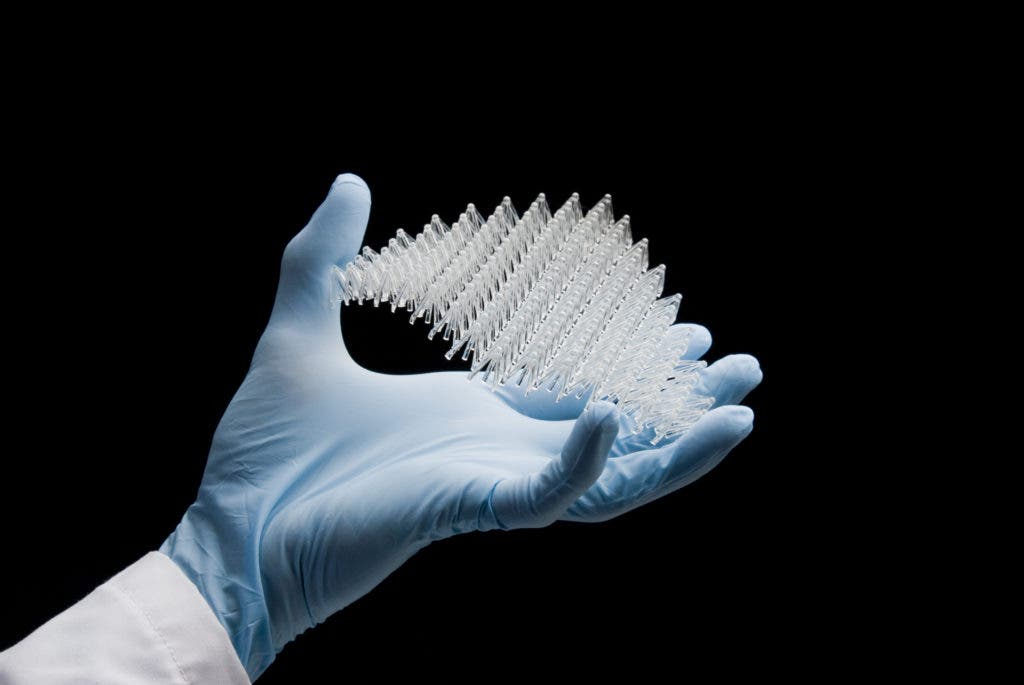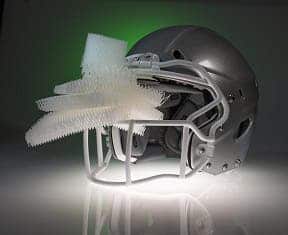
The problem with American Football players and head injuries is well-documented. Serious head injuries, including concussions and other traumatic collisions, have unfortunately become commonplace in American Football.
The helmets, as effectively as they undoubtedly are, still cannot block the damage from collisions that happen on a regular basis. However, a new technology might change that for the better.
Scientists at the University of California Santa Barbara, HRL Laboratories LLC, and the U.S. Army Research Laboratory have developed elastic microlattice pads that have remarkable physical capabilities. The lattices can withstand an impressive array of collisions — both single hits and series of impacts. When tested, the lattices seemed to perform better than existing materials.
The key to their resilience shares a similarity with the Eiffel Tower: the lattice structure is sturdy, but allows air to pass through. This means that the structure is highly adjustable and customizable, allowing engineers to tailor it to absorb different types of shock. There’s another added advantage to the design: it allows air to pass through, keeping the wearer’s head cooler.

The technology is not applicable only to American Football — but to virtually to all helmets.
“Our technology could revolutionize football, batting, bicycle, and motorcycle helmets, making them better at protecting the wearer and much easier to have on your head due to the increased airflow,” says Eric Clough, a researcher at HRL Laboratories, a materials science doctoral student at the University of California, Santa Barbara, and the lead scientist on the study.
The team tested several microlattice structures. The most effective one absorbed up to 27% more energy from a single impact than the best existing polystyrene foam — the most common material in helmets. Compared to vinyl nitrile foam, another common material, it was 48% more effective. Even compared to existing microlattice designs, it absorbed 14% more energy from a single hit. Perhaps even more importantly, after the initial hit, the lattice stayed intact, ready to absorb the next round of impacts.
The results were so good they surprised the researchers themselves.
“A noticeable percentage of improvement in impact absorption was something we were hoping for, but the actual numbers were better than we expected,” says Clough. “Our testing shows that the pads work better than anything on the current market.”
The technology has already been licensed by a sports company, and the team will continue their work to see how the technology could be applied in the military.
However, Clough cautions that the technology isn’t a “magic bullet” capable of shielding the user from all head injuries — people should still be wary of injuries.
“Wearers of helmets with our padding can enjoy the benefits but should never assume they are completely protected from injury or look to test the limits of the product by possibly endangering themselves unnecessarily,” he says. “Even a great helmet can’t always protect you from every injury all the time.”


